Inkaterra: the perfect guide and gateway to Peru
With seven luxury hotels, Peru’s eco-tourism pioneer opens up the very best of the land of the Incas

Arriving at the sacred site of Machu Picchu we immediately found ourselves shoved up against a stone wall, as an army of iPhones strapped to selfie sticks clattered past us.
At more than 2.1 million tags and climbing, Machu Picchu is the 13th most Instagrammed place in the world, and The Week Portfolio’s visit to the site was both breathtaking and bustling in equal measure.
Built atop a mountain and shrouded in swirling mist, the one Inca citadel that the advancing Spaniards never discovered as they colonised the rest of the region is now found by more than 2,500 tourists a day, a cap introduced in 2011 by the Peruvian Ministry of Culture in a bid to conserve the famous site.
The Week
Escape your echo chamber. Get the facts behind the news, plus analysis from multiple perspectives.

Sign up for The Week's Free Newsletters
From our morning news briefing to a weekly Good News Newsletter, get the best of The Week delivered directly to your inbox.
From our morning news briefing to a weekly Good News Newsletter, get the best of The Week delivered directly to your inbox.
Amid the din and the hubbub, the best way to see the archaeological marvel is to find a guide who can lead you away from the madding crowds. We were taken off the beaten path by Joseph, a representative of the pioneering eco-tourism and sustainable development brand Inkaterra, and one of the best guides in the country.
A gateway to Peru
Established in 1975, Inkaterra was founded by José Koechlin, a Peruvian national who has devoted his life to eco-tourism. Today the group’s portfolio of luxury lodges can be found in the orchid-rich forests of Machu Picchu (Machu Picchu Pueblo), deep in the Amazonian rainforest (Inkaterra Field Station, Reserva Amazonica and Hacienda Concepcion), on the cobblestoned streets of Cusco (La Casona), and nestled in the mystical Sacred Valley (Hacienda Urubamba).
The company hosts more than 200,000 travellers every year and specialises in plotting out adventures from ancient Incan sites to the tangled depths of the Amazon rainforest.
A free daily email with the biggest news stories of the day – and the best features from TheWeek.com
The Week Portfolio visited each during a whirlwind tour of some of the very best of Peru, getting to know pieces of the country from a basecamp in each Inkaterra hotel. Here is how the country unfolded before us.
Inkaterra Machu Picchu Pueblo
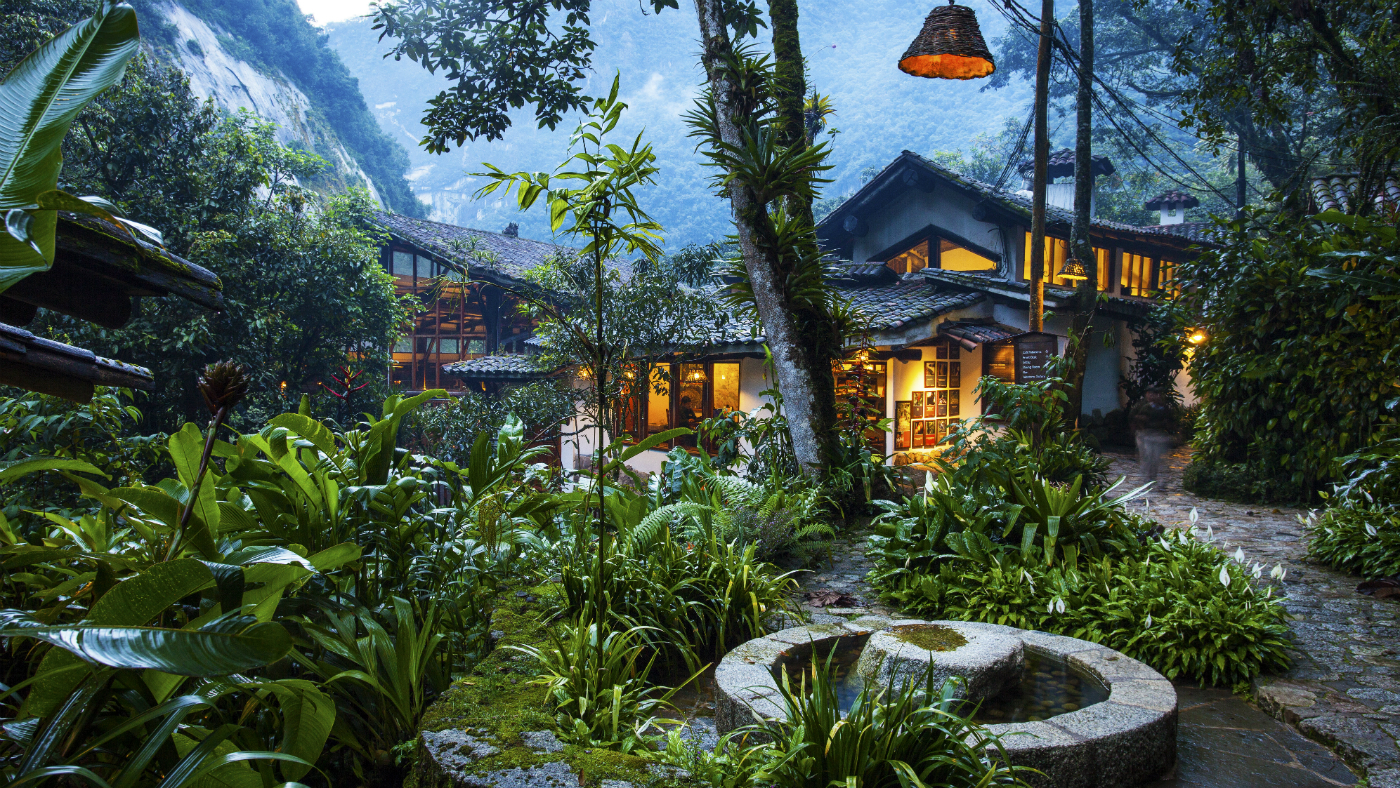
Hidden away for centuries, this haunting Unesco World Heritage Site occupies the top spot on many people’s bucket lists. It’s possible to visit the most talked about archaeological site in South America in one day, but it’s likely to be both stressful and exhausting. To break up your experience, you could do worse than spending a few days at the nearby Inkaterra Machu Picchu hotel, tucked away in the ghostly mists and said to be a favourite of A-listers including Cameron Diaz, George Clooney and Mick Jagger.
The hotel boasts 81 casitas (or mini-houses) dotted throughout five-hectares of wild mountainside along with a glass-walled restaurant, private plunge pools and an Andean eucalyptus sauna. Add in round-the-clock butler service, shamanic rituals, holistic spa therapies and a flowing spring water pool and its possible you might not make it to Machu Picchu for a while.
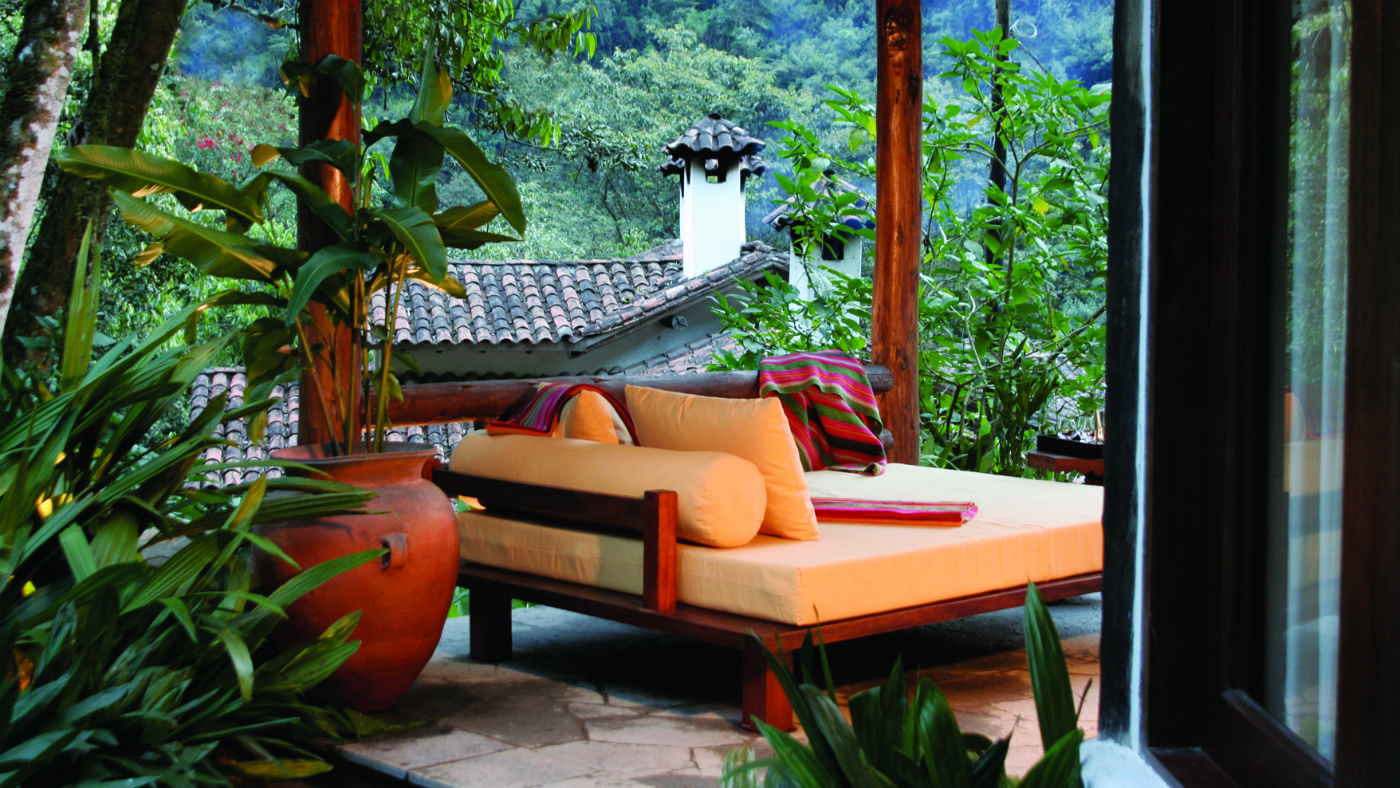
The property also has the world’s largest native orchid collection and more than 200 types of birds including the graceful golden-headed quetzal and the Andean cock-of-the-rock. Follow the looping 5km forest trail round past ancient Inca petroglyphs and rushing waterfalls and you will eventually come face to face with a family of Andean spectacled bears, housed in the hotel’s very own breeding sanctuary.
Once common throughout the Andes and perhaps most familiar to Brits when seen carrying a marmalade sandwich, the spectacled bear is now critically endangered. Inkaterra works closely with the Inka Tera Asociacion and the Peruvian National Institute of Natural Resources to re-home and rehabilitate this exploited species, offering guests a proximity usually afforded only to professional wildlife photographers.
Inkaterra Hacienda Urabamba
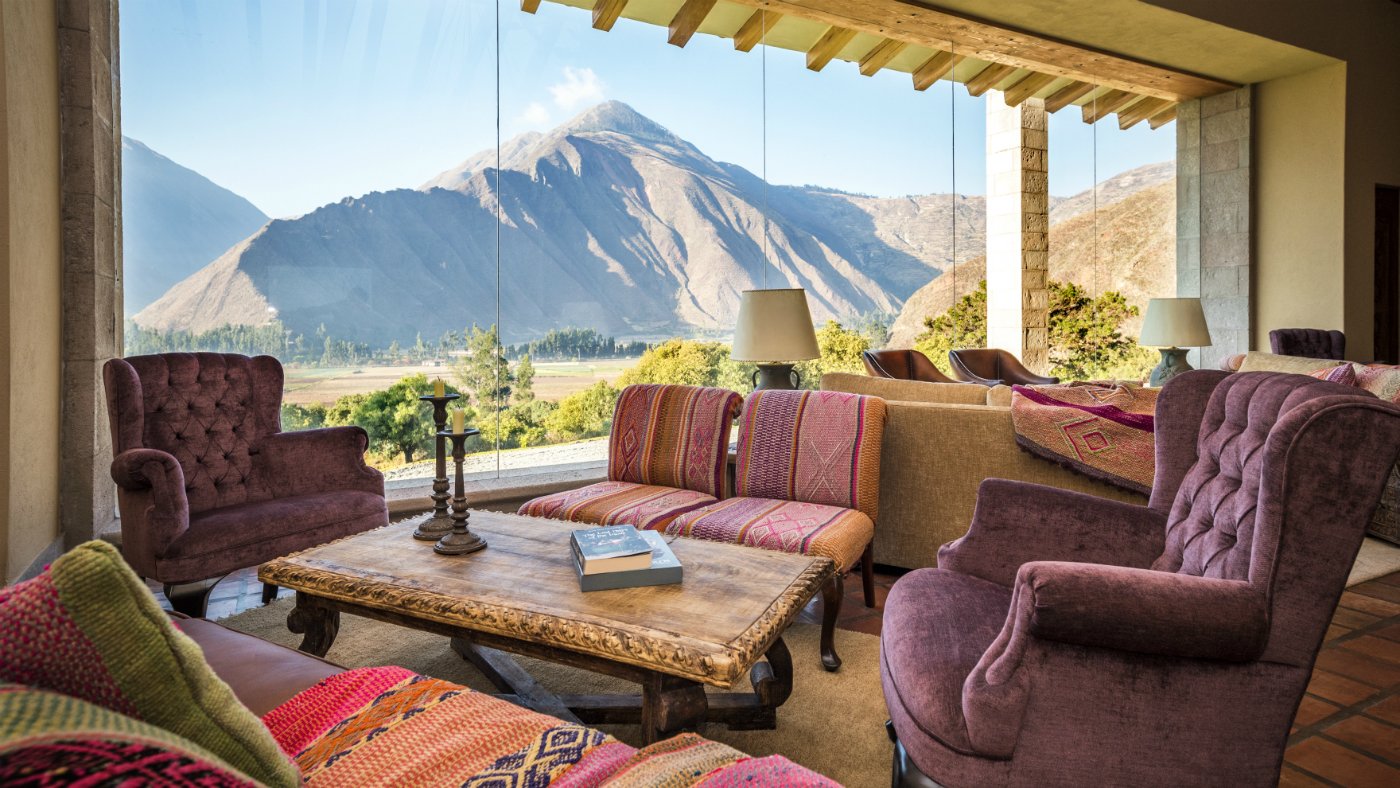
The Sacred Valley is a 70-mile strip of fertile land connecting the capital Cusco to Machu Picchu and is used by thousands of tourists as a road in and out of the Incan citadel, but there is much more to see here. From Machu Picchu Pueblo station, take a train to Ollantaytambo (approximately 1.5 hours), where you can get a car to the Urabamba Valley.
Inca Rail offers the most scenic train journey, with huge domed panoramic windows, open-air observation carriages and attentive staff who drift though with traditional Peruvian food and organic pressed juices. Snow-capped mountains and formidable foothills zoom past our windows as we rattle through to the Río Urubamba Valley. The place is awash with Spanish colonial villages, salt mines and Andean terraced gardens, populated by giant hummingbirds happily circling spikes of agave. Brightly coloured textiles are woven in hillside hamlets by petite traditionally dressed andinas chattering in Quecha, the language of the Incas. Amenable alpacas roam the banks of the Urubamba River against a backdrop of giant corn, potato and quinoa crops.
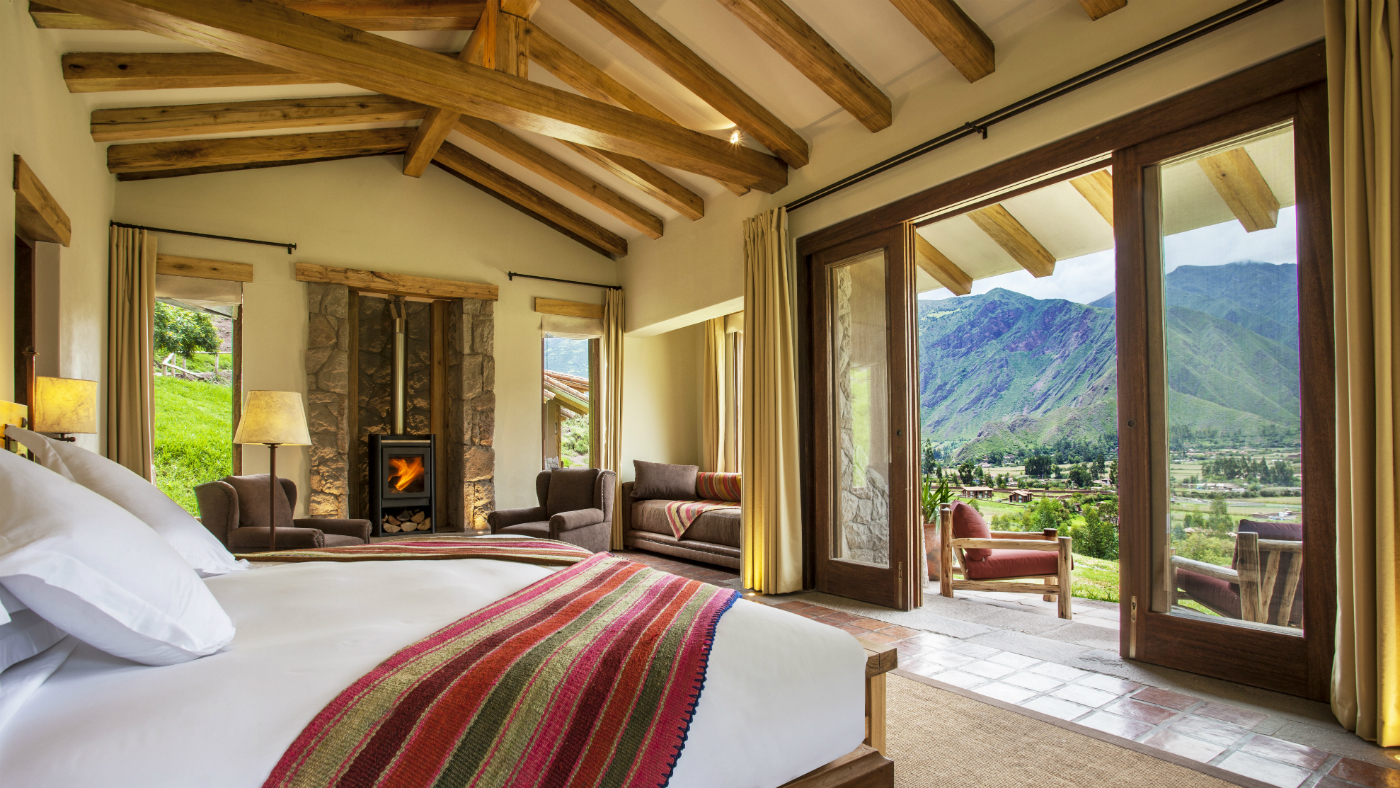
Inkaterra Hacienda Urabamba lies in the empire’s heartland, between historical Cusco and Ollantaytambo and is the perfect base to acclimatise before or after a journey to Machu Picchu. If you aren’t in a rush, take advantage of the insouciant pace here and soak it all up for a decompressing few days.
This contemporary hacienda-style retreat is surrounded by lumbering mountains and huge green hills on grounds of 100 acres. There are twelve rooms in the main house and 24 individual casitas nearby, each with floor-to-ceiling panoramic views of the Sacred Valley and huge bathtubs to sink into after trekking. Attention to detail is first-rate, from the rare pre-Columbian textiles and custom-made furniture to the swathes of fresh eucalyptus that grace the property. An “earth to table concept” is operated, encouraging guests to pick their produce for supper from a 10-acre organic plantation. The farm eschews modern machinery in favour of traditional farming methods including foot ploughs, oxen and llamas, all of which add to the languid, laid-back ambience of the place and invite at least a couple of days lingering.
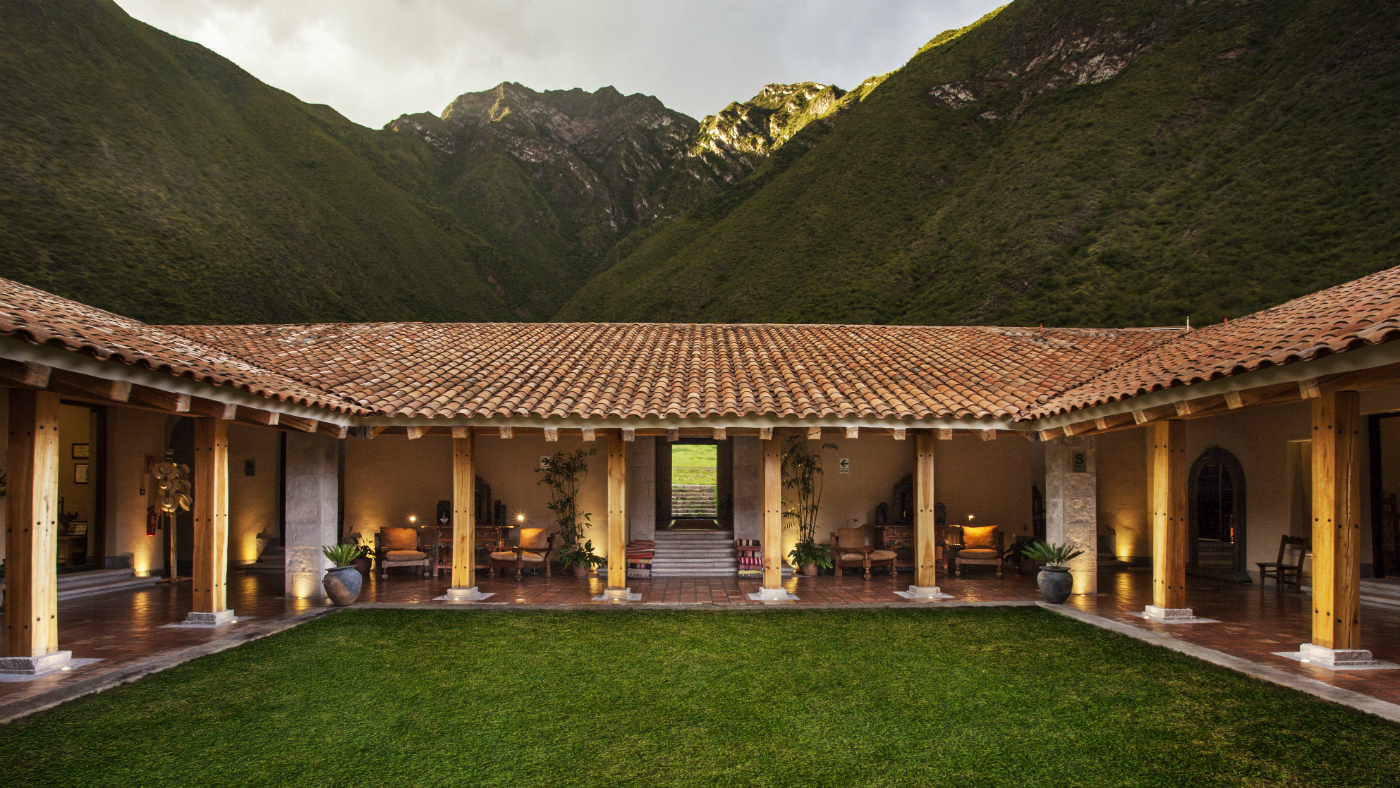
A wealth of excursions are on offer from twilight lantern walks and astronomy classes to trips out to the Chinchero community, also known as the “Rainbow City”. “Pay the Earth” ceremonies take place regularly in Inkaterra’s farm-side Chicheria with a shaman who conducts spiritual rites to Pachamama (Mother Earth), a deity associated with fertility. Worshipped among the indigenous peoples of the Andes, they believe in her power to sustain life on Earth and rule over the spiritual universe.
The locals have been brewing Chicha de Jora here for millennia, a fermented maize brew believed to aid spiritual enlightenment. Surrounded by Andean textiles, batans (stone corn crushers) and raquis (large clay pots), we made our own as the sun sank low in the sky and an orange glow filled the room.
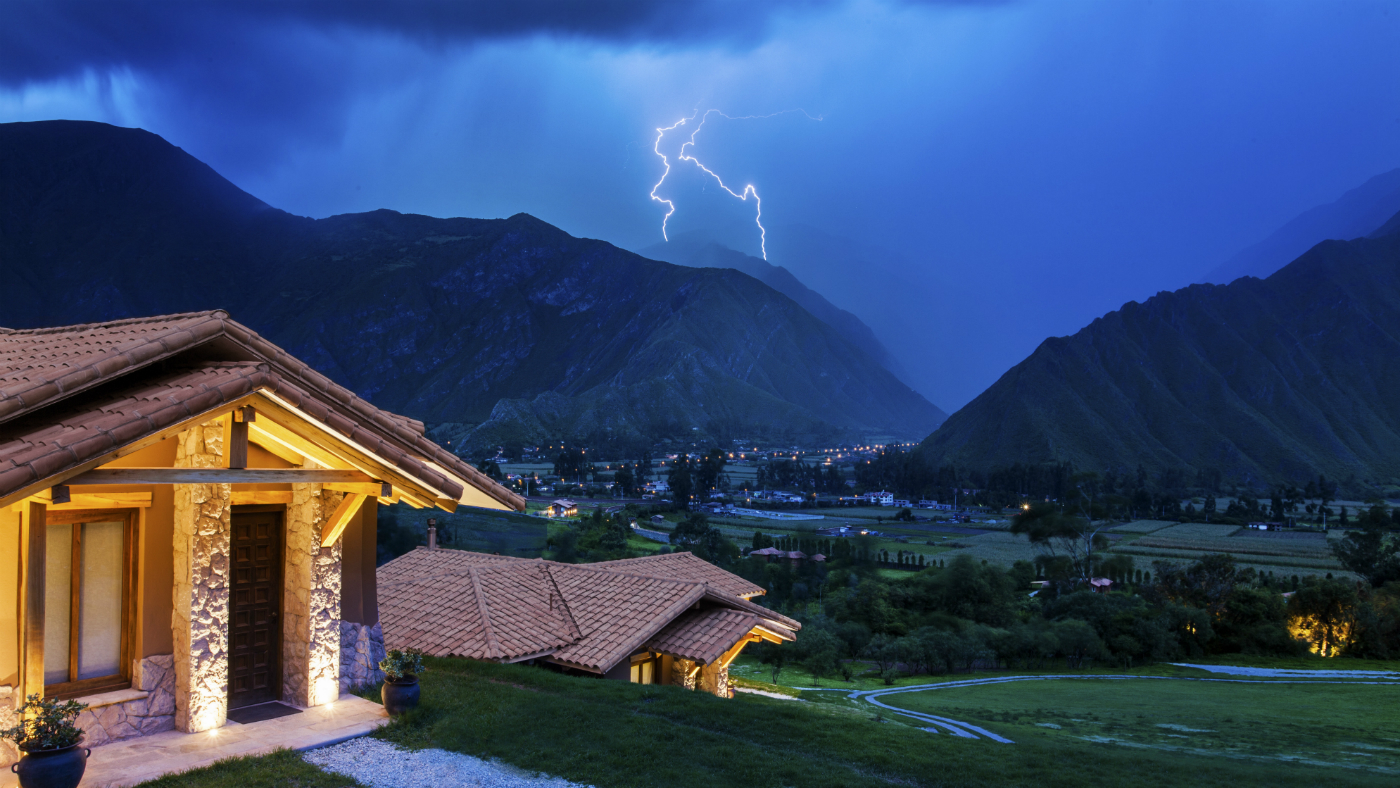
Reserved for the most cherished of ceremonies, Chicha de Jora is first offered to pachamama by pouring some onto the ground, signifying gratitude for the fertile land. Next, the mountains are saluted by raising the chalice to the sky. Finally the Chicha de Jora is drunk and existential awareness is said to be achieved, bringing those who partake of the sacred drink closer to the gods.
After the ceremony, we walked through the grounds carrying lanterns, necks craned to the sky for some spectacular Andean star-gazing. In the absence of light pollution, the inky sky was flecked with stars and the spectral haze of the Milky Way clearly visible.
Inkaterra Guides Field Station
Few places on the planet flutter with the level of biodiversity found in Peru and, despite the country’s long history of human habitation, it is thought that much of its flora and fauna still lies undiscovered. Well over half of the country is covered in dense rainforest, the entrance to which lies some 500km away.
Puerto Maldonado is a hot and steamy jungle town in the lowlands and an extremely accessible gateway to the southern Amazon. From Urambamba, head back to Cusco where you can board a small plane to Puerto Maldonado under an hour away.
Named after female warriors of Greek mythology, the Amazon is itself a place of near mythical status. The Amazon, the jungle, the “green hell”, Peru’s slice of rainforest is one of the last true frontiers on Earth. Home to one-tenth of the world’s known species and producing over 20% of the planet’s oxygen, it is often dubbed “the lungs of the planet”. The intricate synergy of flora and fauna play a huge role in sucking up climate-changing carbon dioxide and is a vital resource for the eradication of disease.
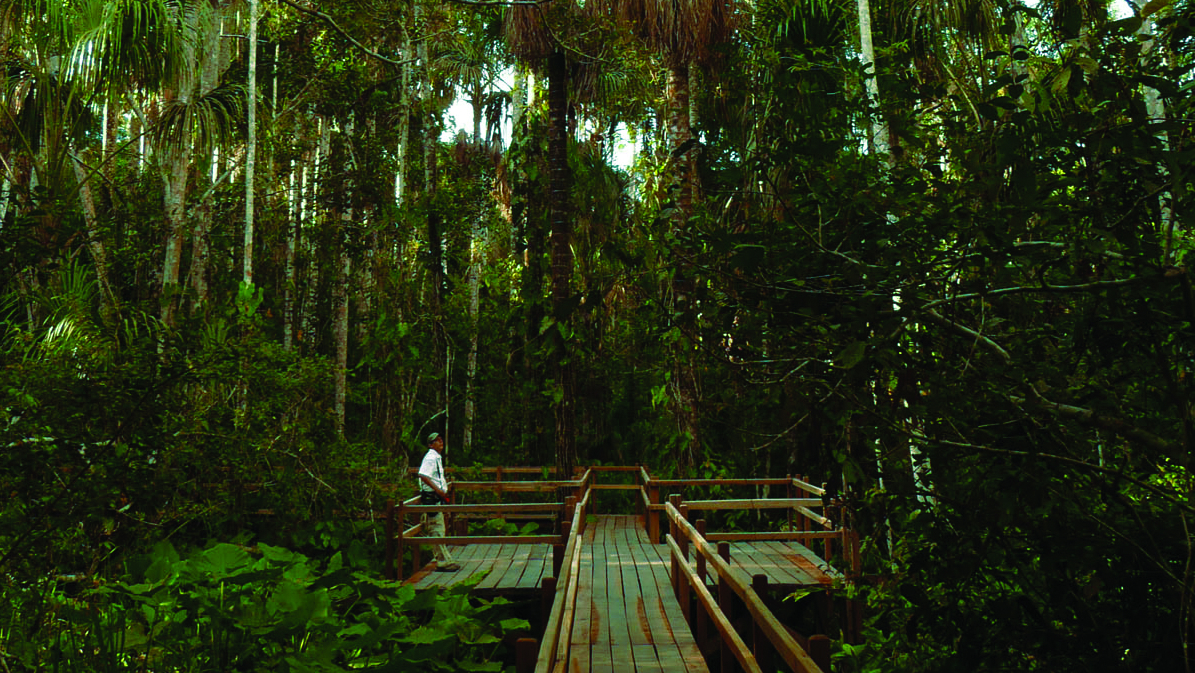
The huge botanical resources hidden in the labyrinth-like winding jungle trails have contributed significantly to Western medical advances, yet less than 1% of the entire rainforest has been fully explored and two percent of it is irreparably damaged each year.
Tribal shamans play a crucial role in helping scientists to discover the potentials of plants. As Dr. Mark Plotkin, an ethnobotanist at Conservation International has said, “Each time a medicine man dies, it is as if a library has been burned down.”
Inkaterra has promoted environmentally sensitive tourism and funded scientific research for the past 35 years, gaining the endorsement of the UN, the World Bank and the National Geographic Society. Scientific research is produced as a basis for conservation, education and the wellbeing of local communities. And these days, you can even stay at Inkaterra’s working Amazonian field station, complete with flora and fauna laboratory.
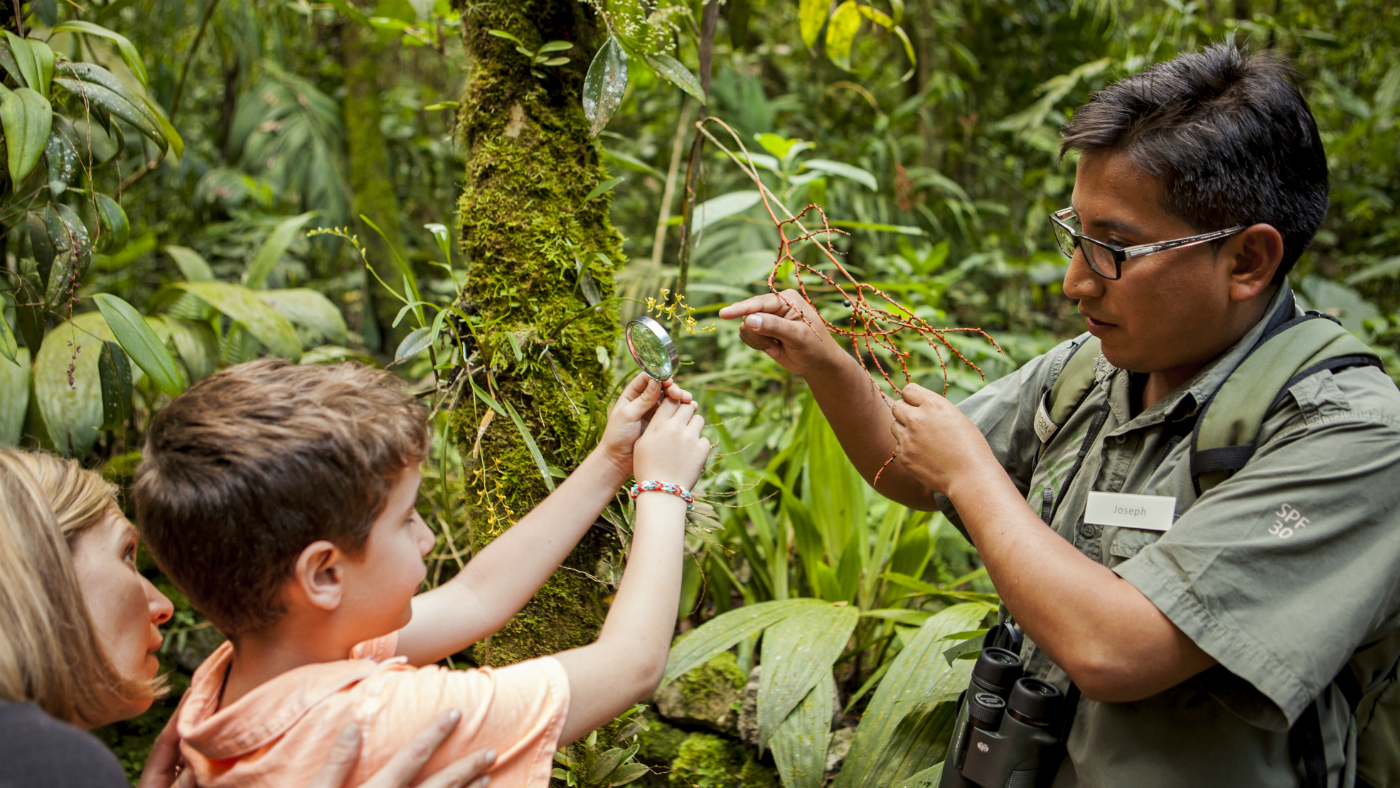
There are three Inkaterra properties in the Amazon, each within an hour’s boat ride from one another (the only way to get around in the Amazon). Sitting on the banks of the Madre de Dios river, the Inkaterra Guides Field Station is the research headquarters of the Inkaterra Association, a non-profit organisation devoted to the conservation of Amazonian, Andean and Marine ecosystems of Peru.
Until last year it hosted research scientists and volunteers, but not paying guests. Today it welcomes “investigators, volunteers and travellers eager to engage in different projects and experience the Amazon rainforest in an intense and scholarly way.”
The primordial landscape drifts slowly by as we cruise through the seemingly deserted latte-coloured waters. Peru might contain the greatest biodiversity of any place on Earth, but you’ll need an expert to point it out. Thanks to the laser-like eyes of our guide, we are soon watching an Attenborough-worthy live documentary.
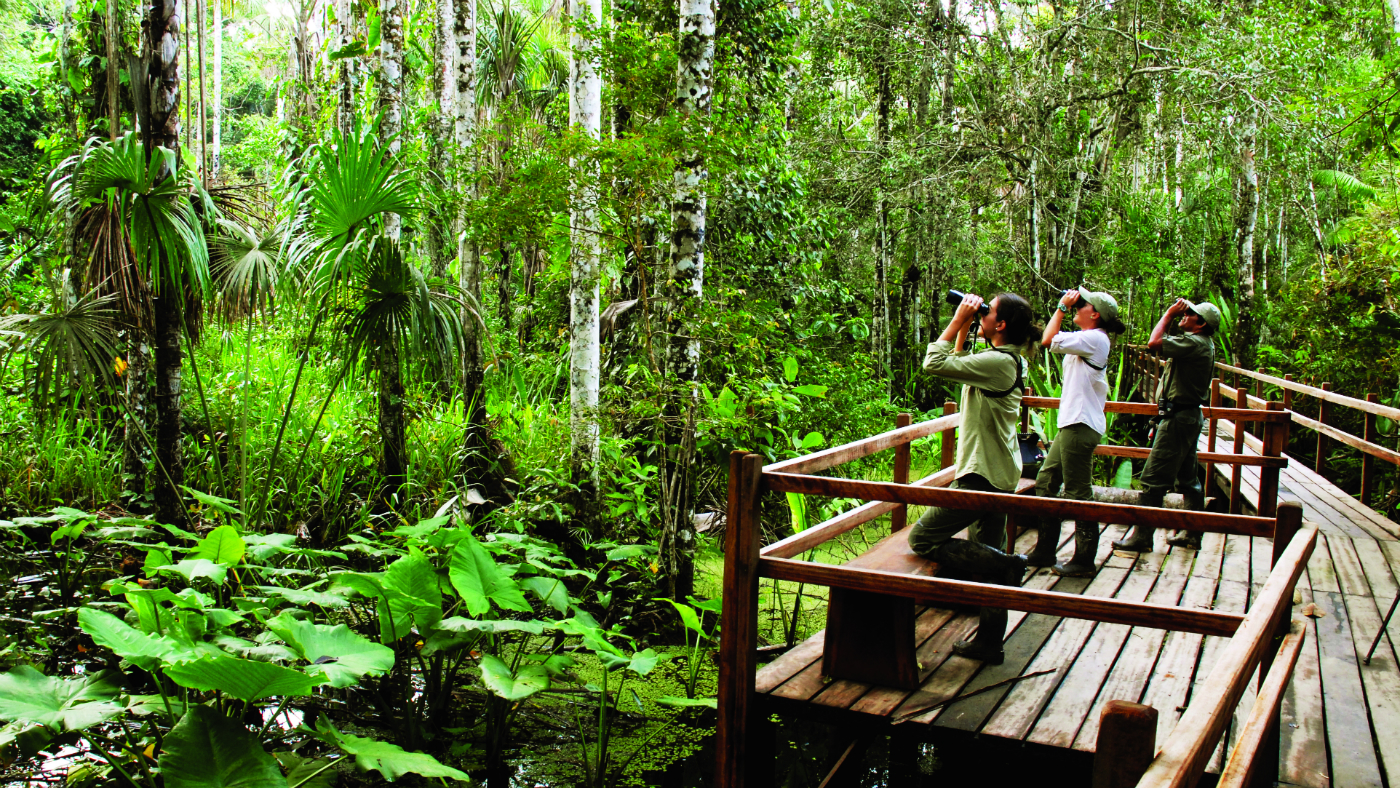
Sloths, jaguars and anteaters prowl forests, monitor lizards sink into swamps, caimans glide through the waters and the world's largest rodent, the rotund capybara, lies in a toothy stupor on the grassy riverbank.
With just four thatched cabañas, some mosquito nets and fans, Field Station is the most basic Inkaterra property in terms of accommodation, but if you’re looking for hands-on conservation experience in a working rainforest laboratory, this is the place for you.
Traditional Peruvian food is served buffet-style in the main restaurant on long communal benches, and the rationed wi-fi and electricity naturally encourages bonding with fellow guests and guides. We spent several lantern-lit evenings enraptured by our guide, who softly recalled the three months he spent living with a tribe when he was a child, and explaining the unusual path he had taken to his current profession.
Inkaterra Reserva Amazonica

Inkaterra Reserva Amazonica is set in a 42,000-acre private concession a little further along the banks of the Madre de Dios River, adjacent to the Tambopata National Reserve, a rich eco-system spanning savannah and old-growth rainforest. Blissfully secluded, Reserva Amazonica is billed as an “eco-luxury lodge” – i.e. it’s not the five-star luxury you may find in the city, but in the depths of the Southern Amazon, it’s the ultimate indulgent hideaway. Getting here is fairly straightforward – Puerto Maldonado is just 45 minutes away by boat.
There are 24 Superior cabañas, eight with a river view, (Superior Rios) one large Amazonica suite and two Tambopata suites. The latter are the most extravagant, featuring personal plunge pools, private covered terraces and outdoor showers in an Ese’ Eja style (inspired by the indigenous people of that name). The suites are large (840-square feet), with tall fishtail palm ceilings and hammocks for afternoon siestas.
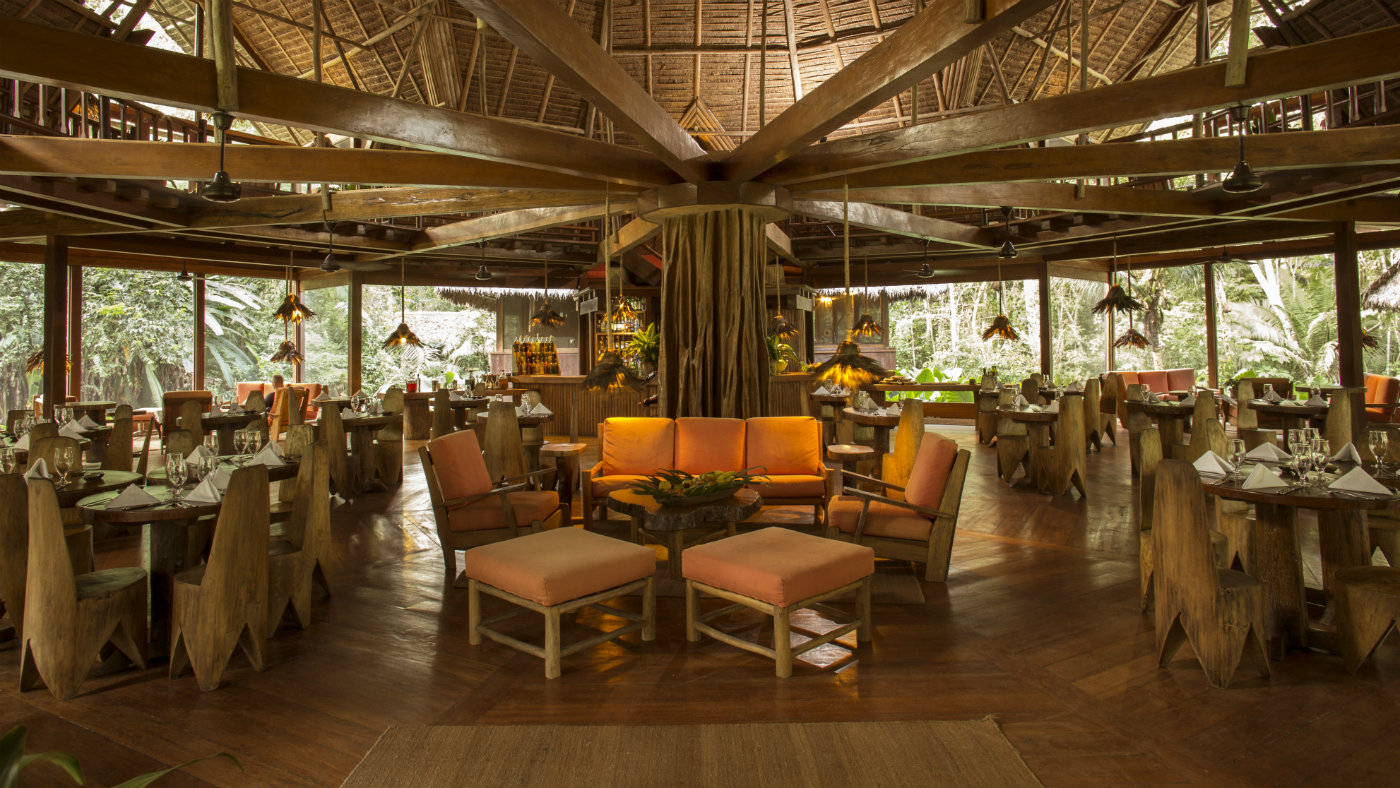
The menu is traditional Peruvian fare, with many of the ingredients grown locally at Inkaterra’s eco-farm. Meals are served in the dining room, the ground floor of a two-storey wooden pavilion built by native craftspeople. Filled with huge sofas and colourful hammocks, the second level overlooks the Madre De Dios and surrounding rainforest - the perfect setting for afternoon tea. Or the complimentary Pisco Sour offered to all guests at cocktail hour.
Canopy Inkaterra opened in 2005 and is a complex set of hanging bridges, towers and platforms, allowing guests to traverse treetops for a quarter of a mile, suspended 98ft above the ground.
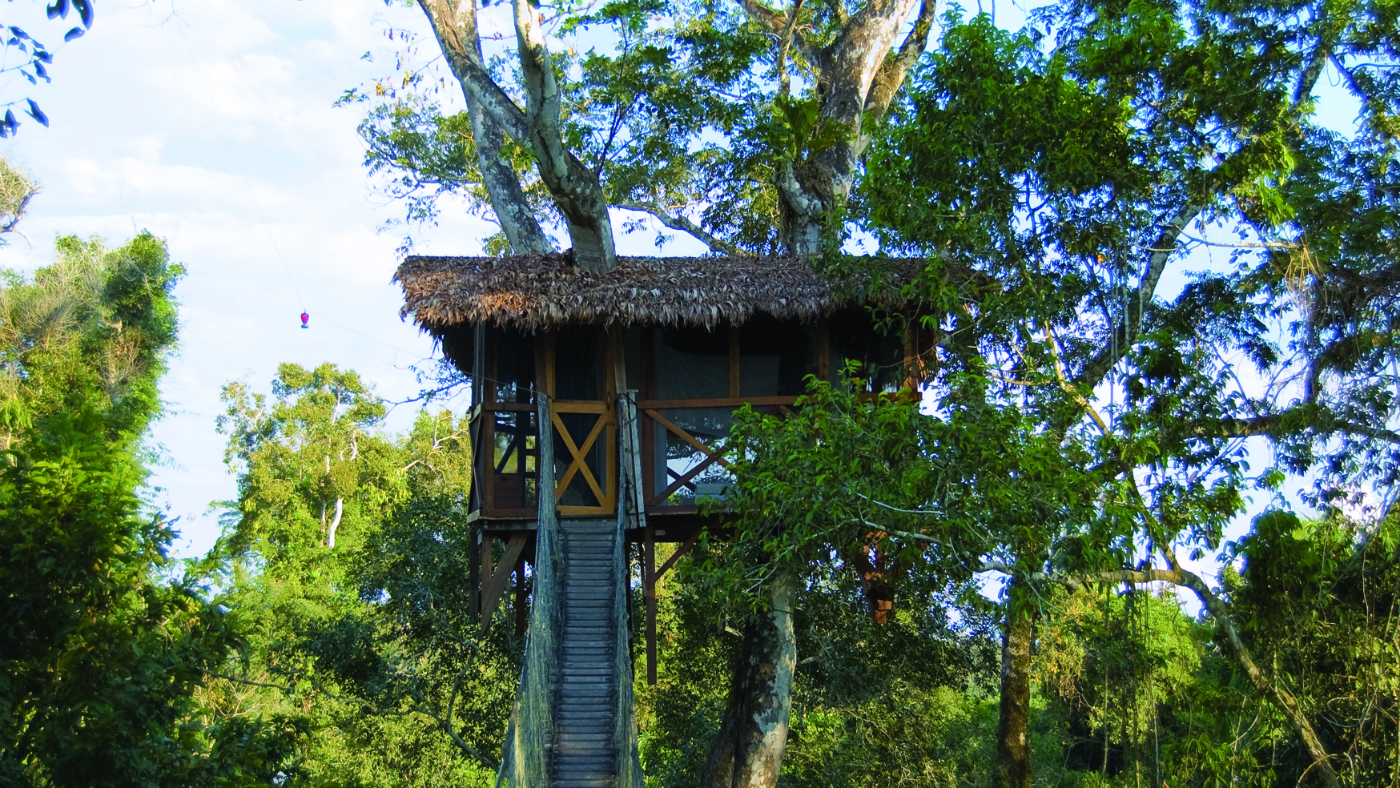
The walkway provides access to the breathtaking upper reaches of the rainforest usually seen only by the hundreds of birds that perch in the branches. For the more adventurous, there is the Canopy Treehouse (complete with Canopy Butler), built on a remote platform attached to the walkway some 90ft above the ground.
Surrounded by sky-scraping trees amid a cacophony of rainforest screeches and trills is like bearing witness to the dawn of time. Meticulously engineered, it is considered one of the safest canopy walkways in the world and one of South America’s largest.
Inkaterra Hacienda Concepción
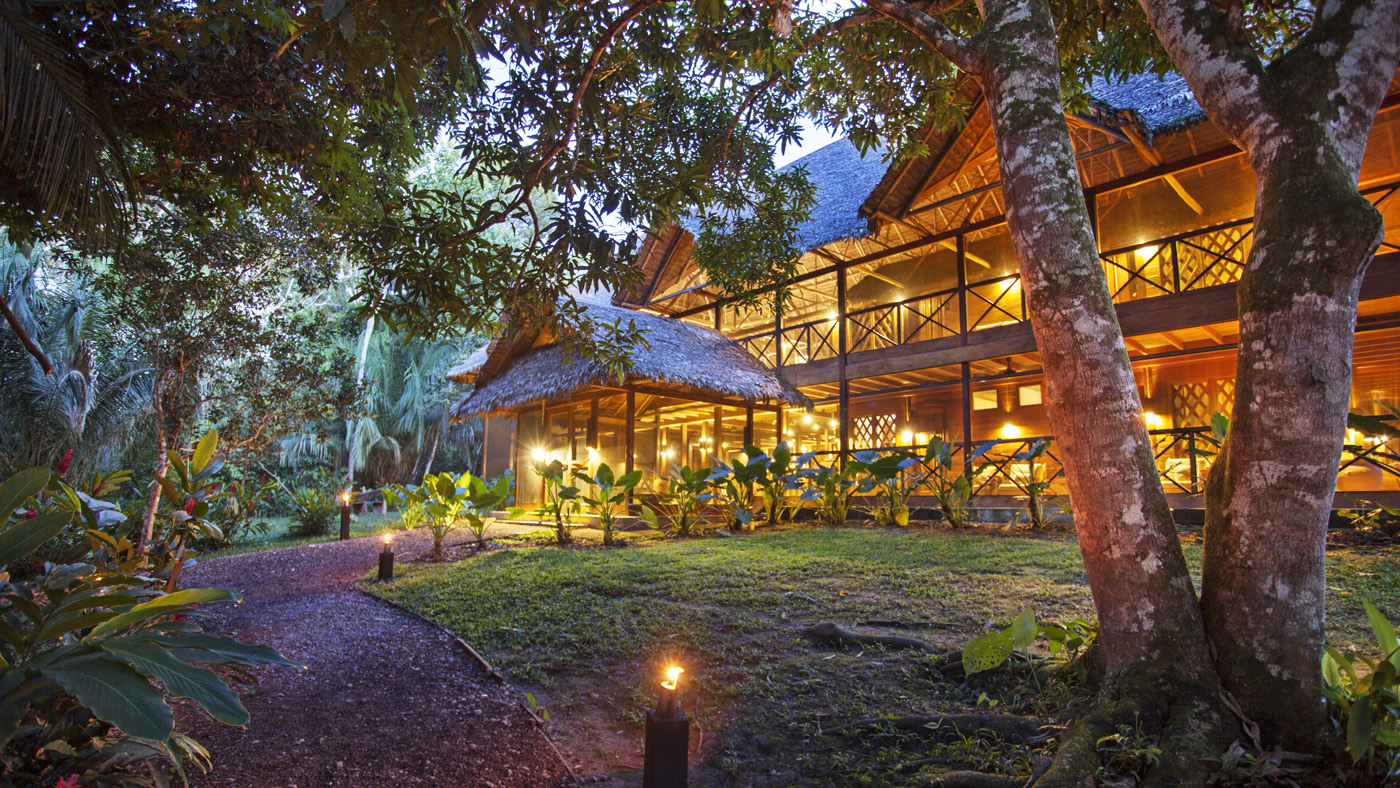
Deep within the heart of the Amazon where the story of Inkaterra first began, is Inkaterra Hacienda Concepción, in a 400-acre former cocoa and rubber plantation. 19 private cabañas sit on stilts amid the lush jungle and there are six spacious rooms in the lodge's main building.
Brazil-nut shells line walking trails throughout the property, one of which opens out to a medicinal botanical garden with some 200 indigenous vascular plant species. Excursions include a visit to nearby Lake Sandoval, a water mirror inhabited by Howler monkeys, caimans and giant river otters.
Why go?
From the opening of a simple jungle lodge in 1975, Inkaterra has been blazing the trail for sustainable tourism for over 40 years and thankfully shows no sign of stopping. This is nature travel at its most authentic, with a family of experts eager to share their slice of Peru, from squaring up to a tarantula to partaking in ancient ancestral customs.
Inkaterra has trained more than 4,000 locals over the years, creating a legacy through an ongoing understanding and respect for the fascinating biodiversity of the country. This vision and bravado has opened up countless opportunities for “eco-conscious” travel, but it is the astonishing knowledge of the Inkaterra Explorer Guides that will really pull you in to the fabric of Peru, upgrading a luxurious trip into a mind-blowing adventure.

An 11-day holiday to Peru staying one night in Lima, two nights in Sacred Valley, two nights in Machu Picchu, two nights in Cusco and two nights in the Amazon starts from £4,062 per person. The price includes flights, transfers, excursions, breakfast daily, full board in the Amazon, lunch or dinner on the train to and from Machu Picchu, first-class hotels staying in Inkaterra properties - Reserva Amazonica in the Puerto Maldonado and Wyndham Hotel Costa del Sol in Lima.
For further information contact Journey Latin America, 020 8600 1881, journeylatinamerica.co.uk
For more information on Peru visit the official tourism board website: www.Peru.Travel
-
 ‘City leaders must recognize its residents as part of its lifeblood’
‘City leaders must recognize its residents as part of its lifeblood’Instant Opinion Opinion, comment and editorials of the day
-
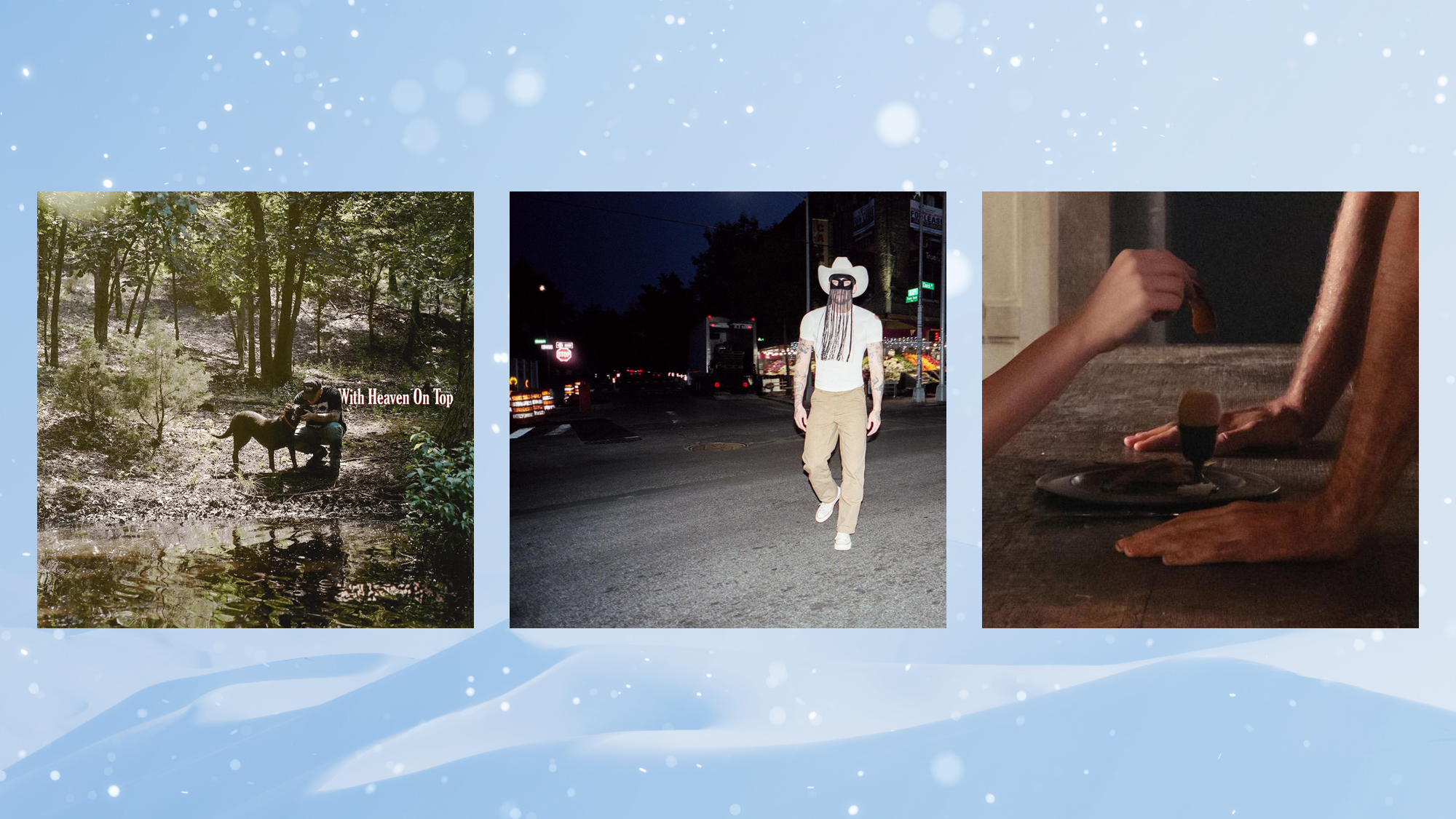 10 upcoming albums to stream during the winter chill
10 upcoming albums to stream during the winter chillThe Week Recommends As the calendar turns to 2026, check out some new music from your favorite artists
-
 Kristi Noem might not be long for Trumpland
Kristi Noem might not be long for TrumplandIN THE SPOTLIGHT The Homeland Security secretary has been one of the most visible and vocal architects of Trump’s anti-immigration efforts, even as her own star risks fading
-
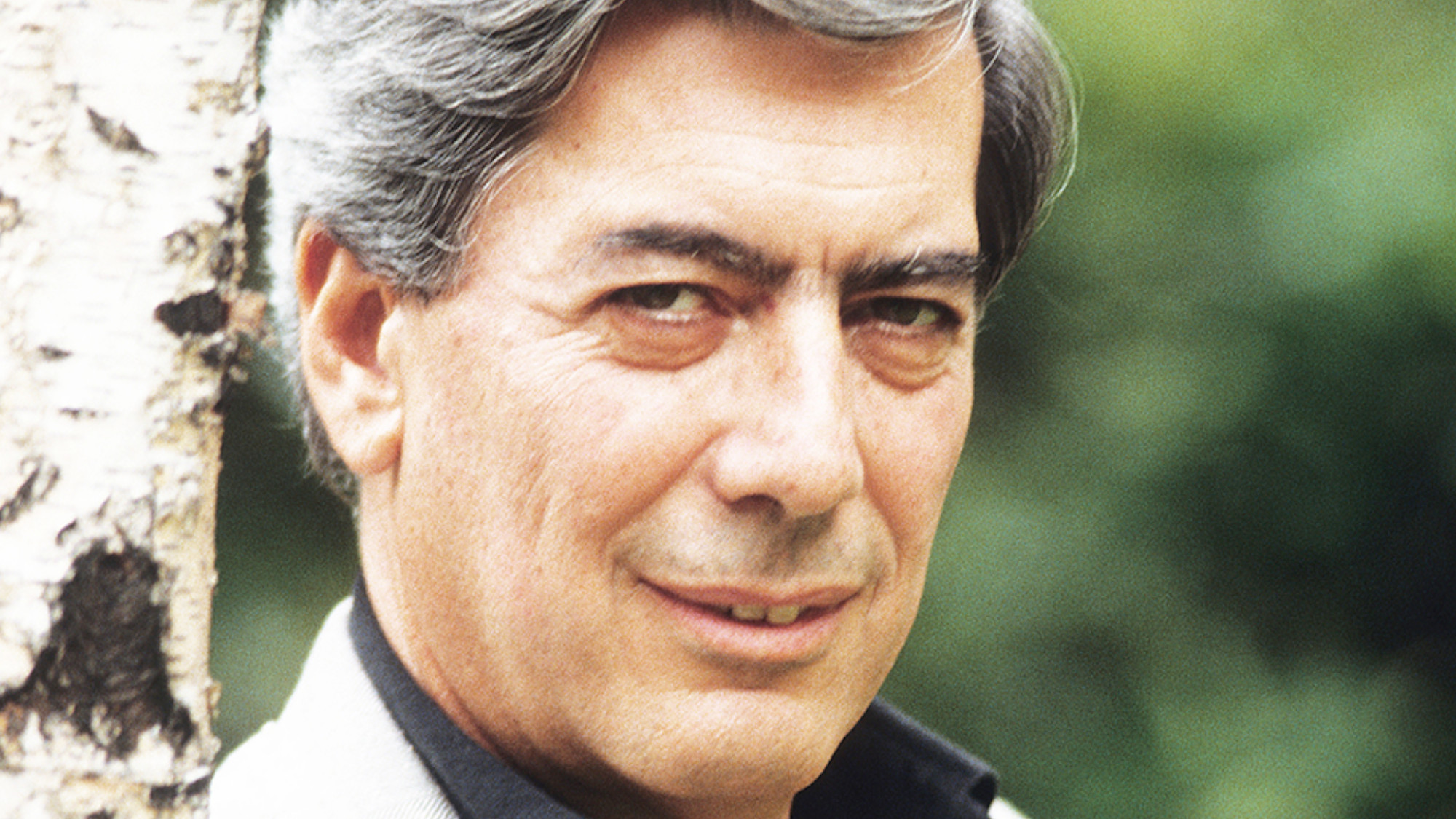 Mario Vargas Llosa: The novelist who lectured Latin America
Mario Vargas Llosa: The novelist who lectured Latin AmericaFeature The Peruvian novelist wove tales of political corruption and moral compromise
-
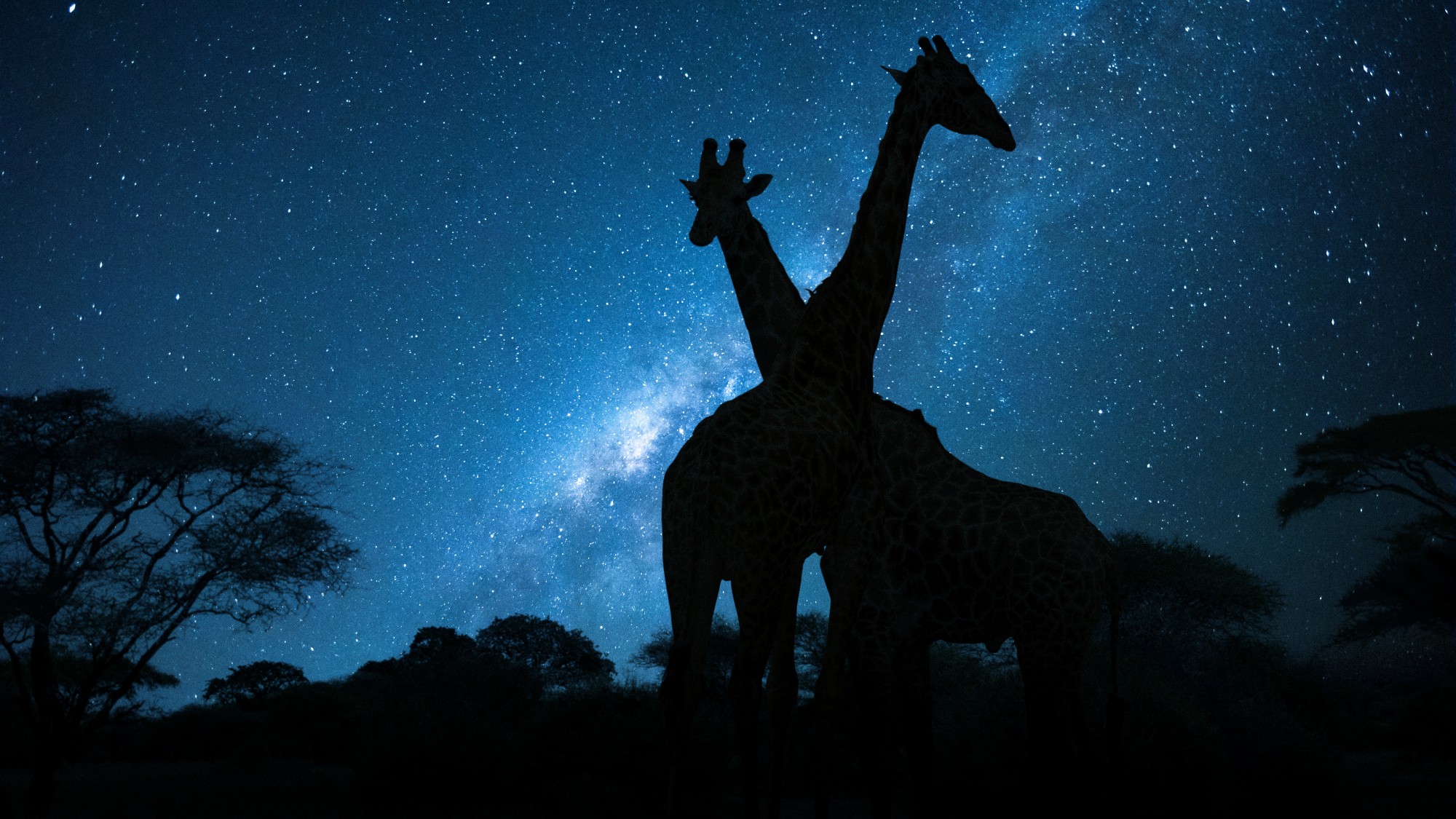 6 stellar noctourism adventures
6 stellar noctourism adventuresThe Week Recommends After the sun sets, the fun begins
-
 A beginner's guide to exploring the Amazon
A beginner's guide to exploring the AmazonThe Week Recommends Trek carefully — and respectfully — in the world's largest rainforest
-
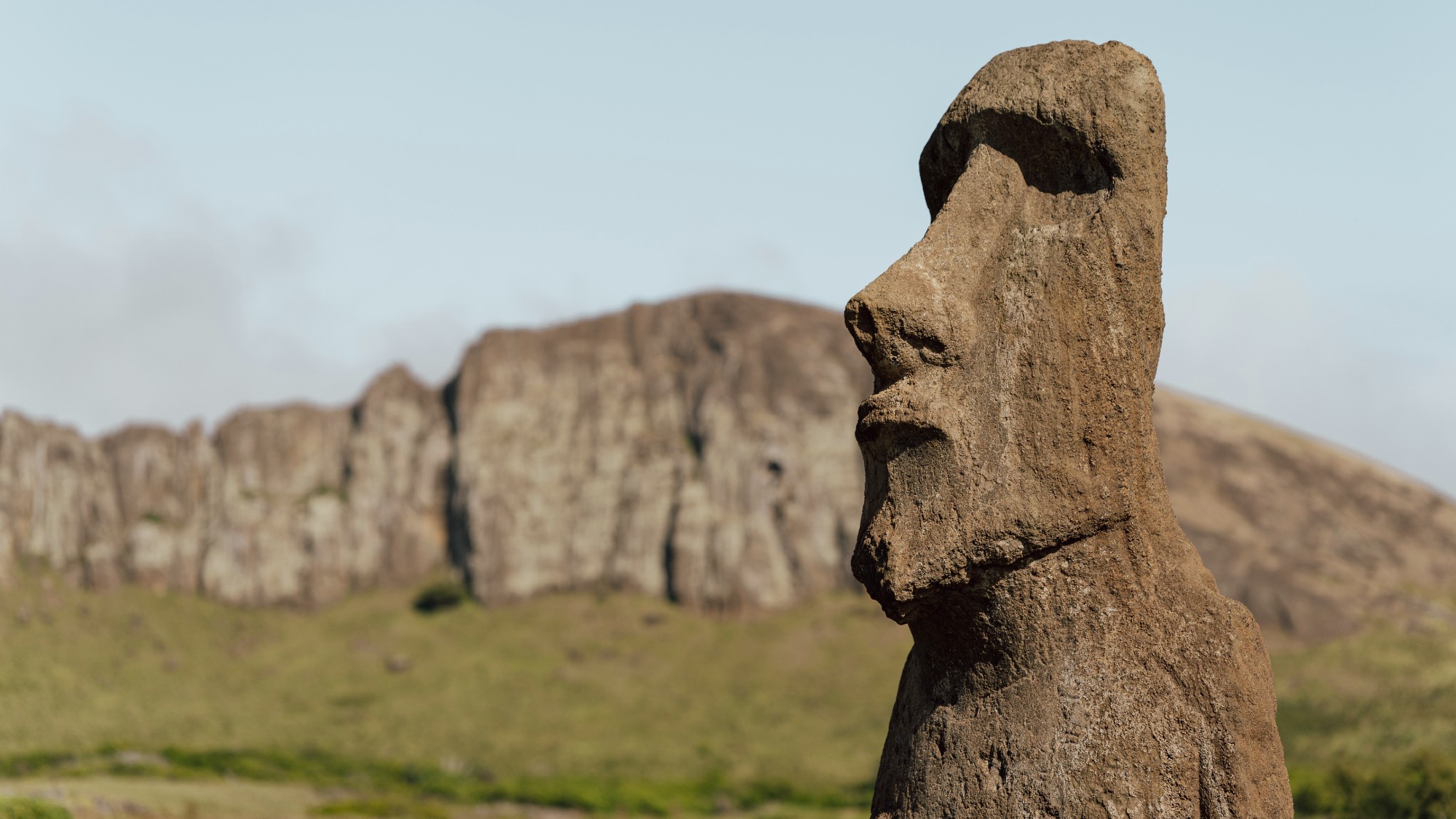 Exploring Easter Island, one of the world's most remote inhabited islands
Exploring Easter Island, one of the world's most remote inhabited islandsThe Week Recommends It takes time and effort to travel to this mystical locale
-
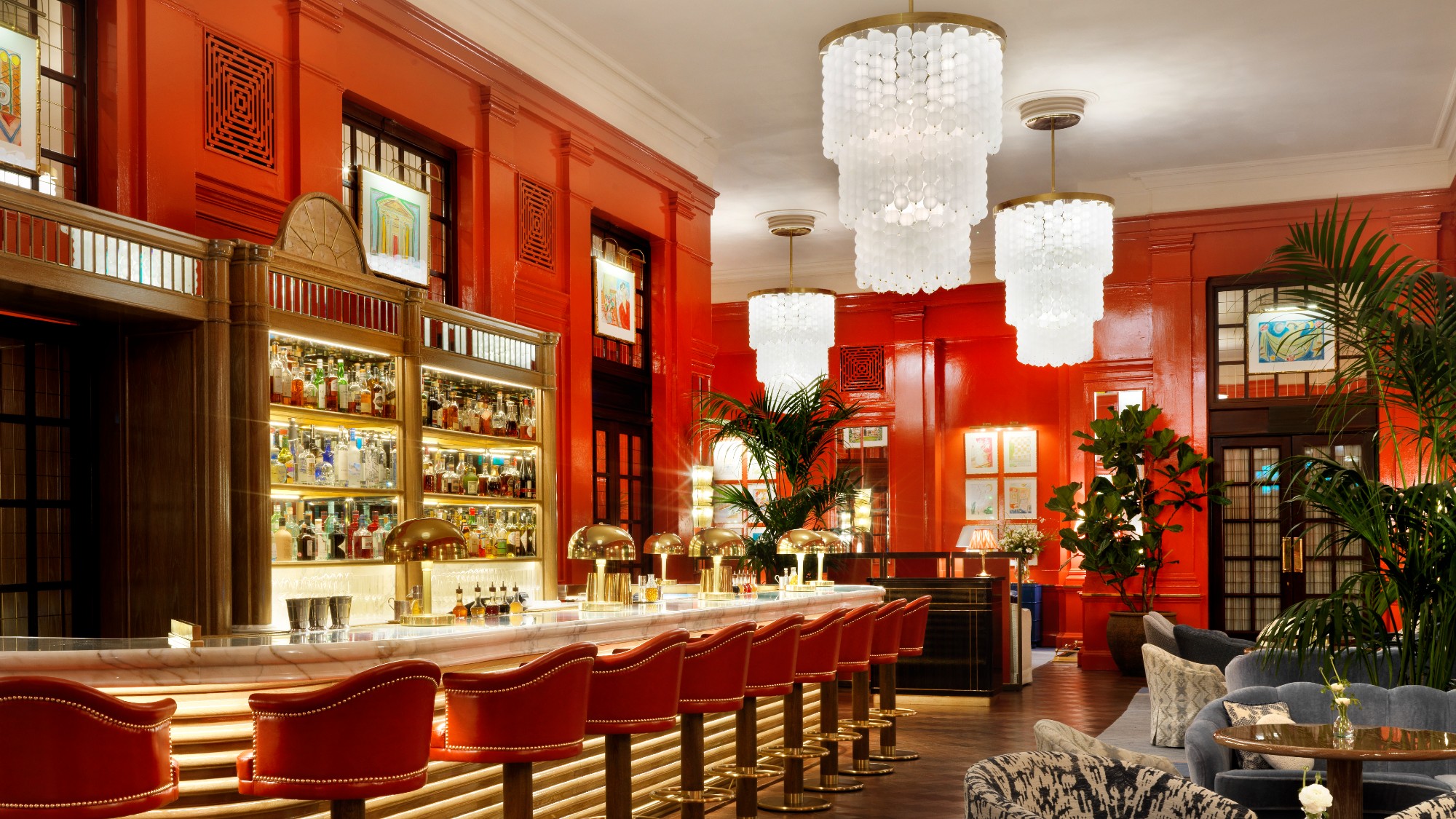 Raise your glass at these 7 hotel bars where the vibe is as important as the drinking
Raise your glass at these 7 hotel bars where the vibe is as important as the drinkingThe Week Recommends Have a pisco sour in Peru and a Bellini in Rome. Or maybe run into Bruno Mars in Vegas.
-
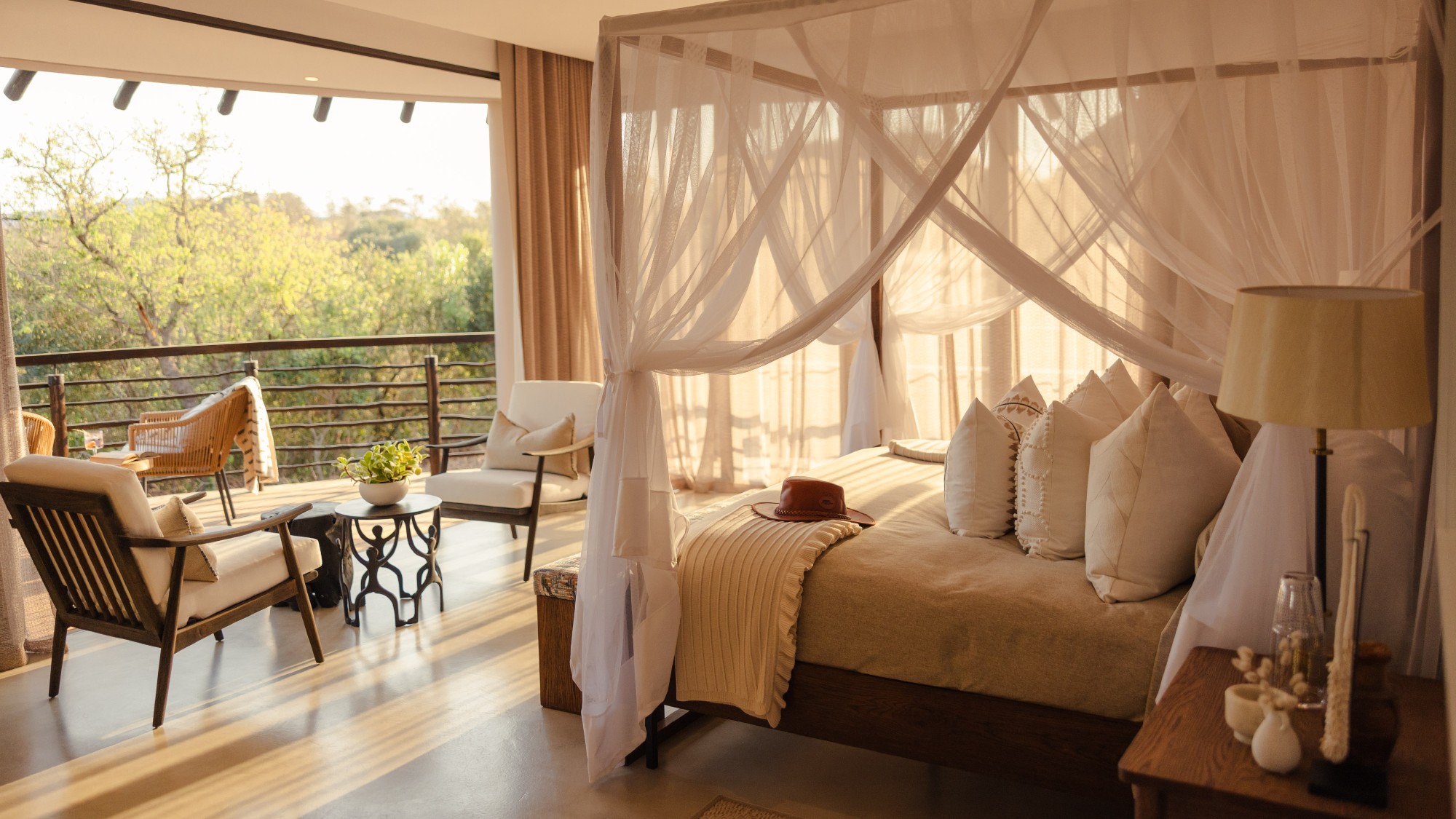 Take advantage of sublime October weather at these 7 hotels
Take advantage of sublime October weather at these 7 hotelsThe Week Recommends Rain, snow and sleet will absolutely not be keeping you from your destination
-
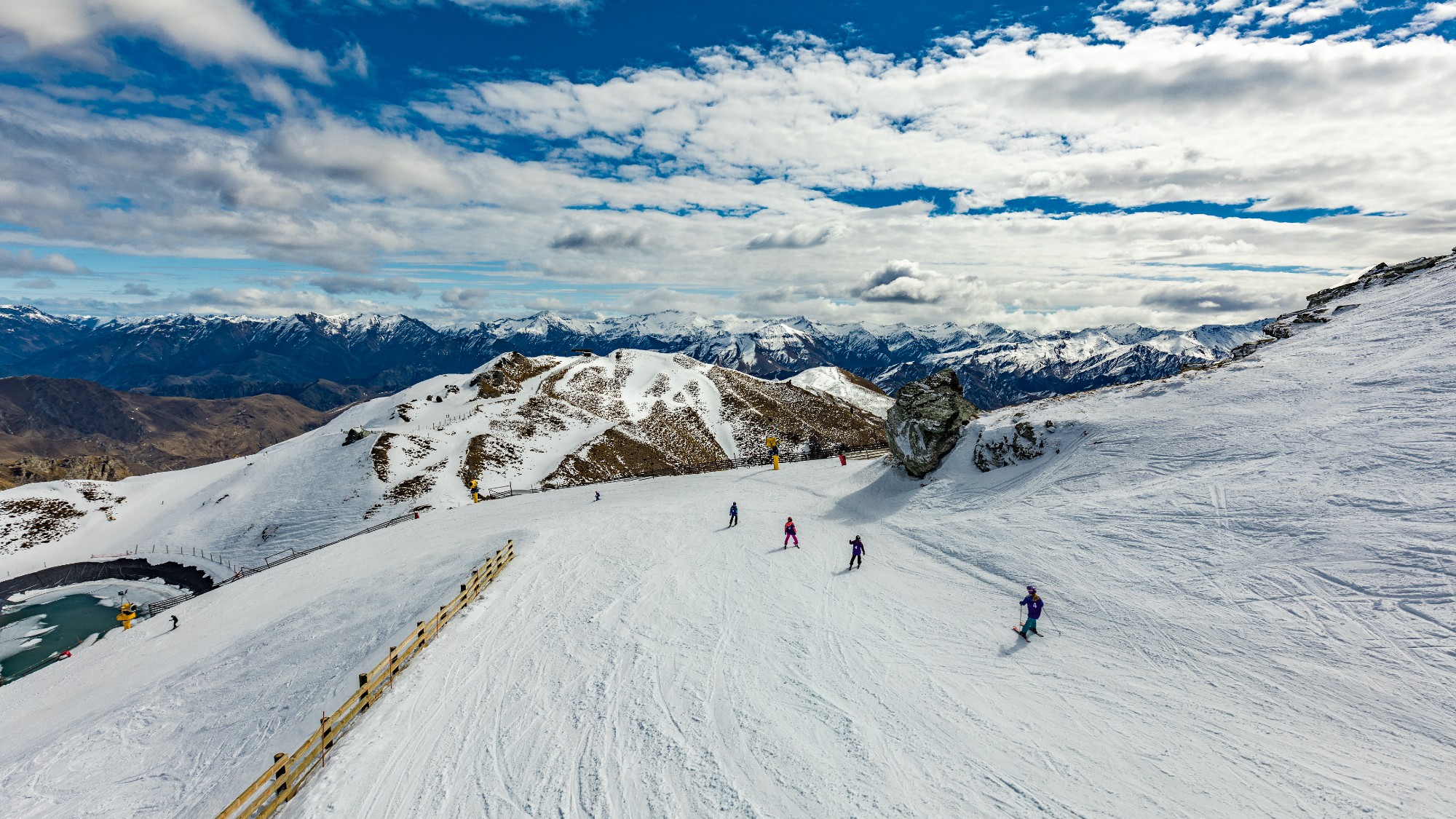 7 snowy places around the world to escape a hot American summer
7 snowy places around the world to escape a hot American summerThe Week Recommends It's a winter wonderland in the Southern Hemisphere
-
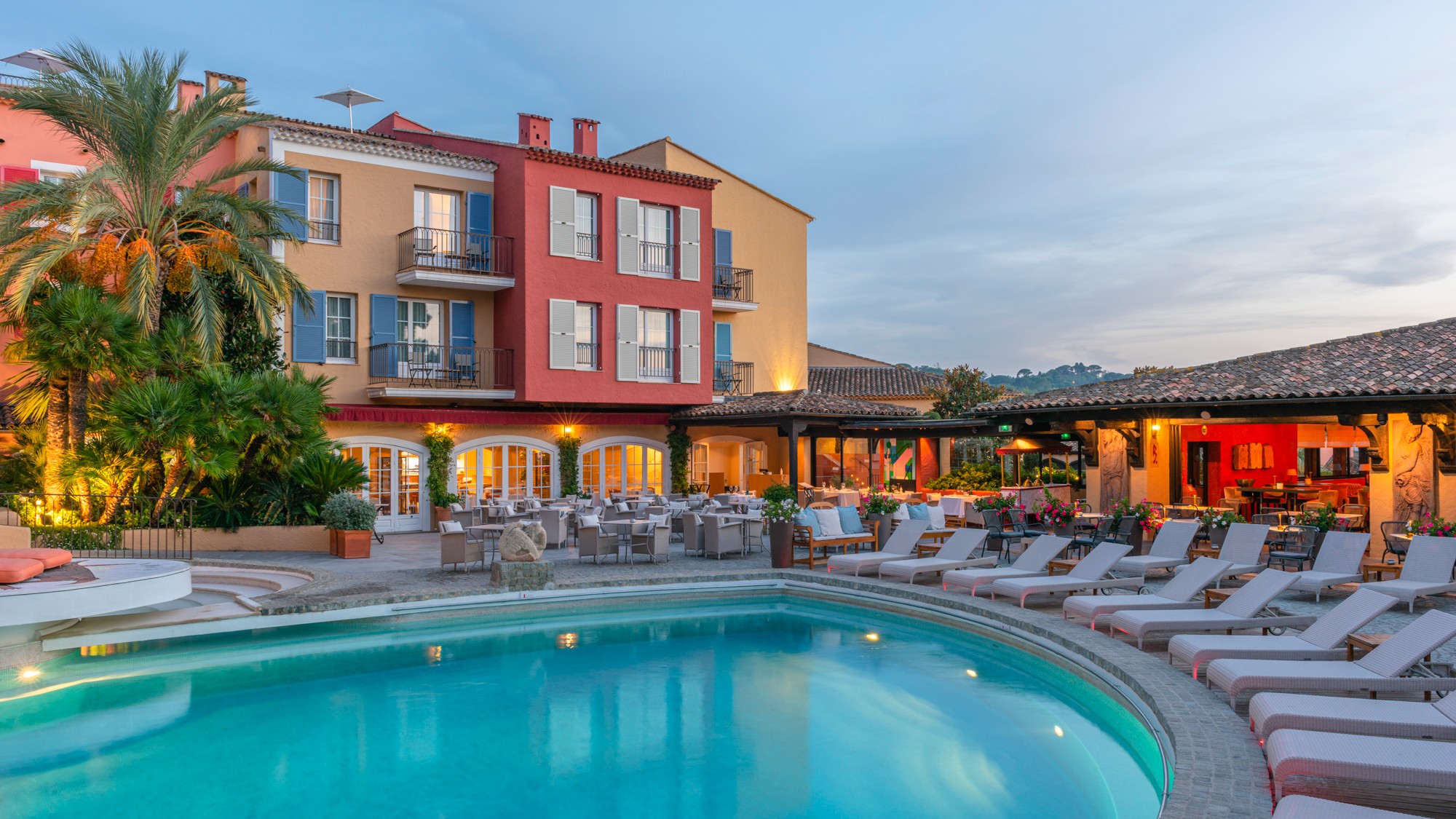 7 magnificent hotels to visit before the summer crowds descend
7 magnificent hotels to visit before the summer crowds descendThe Week Recommends Have beach time in the Dominican Republic or a spa day in Saint-Tropez